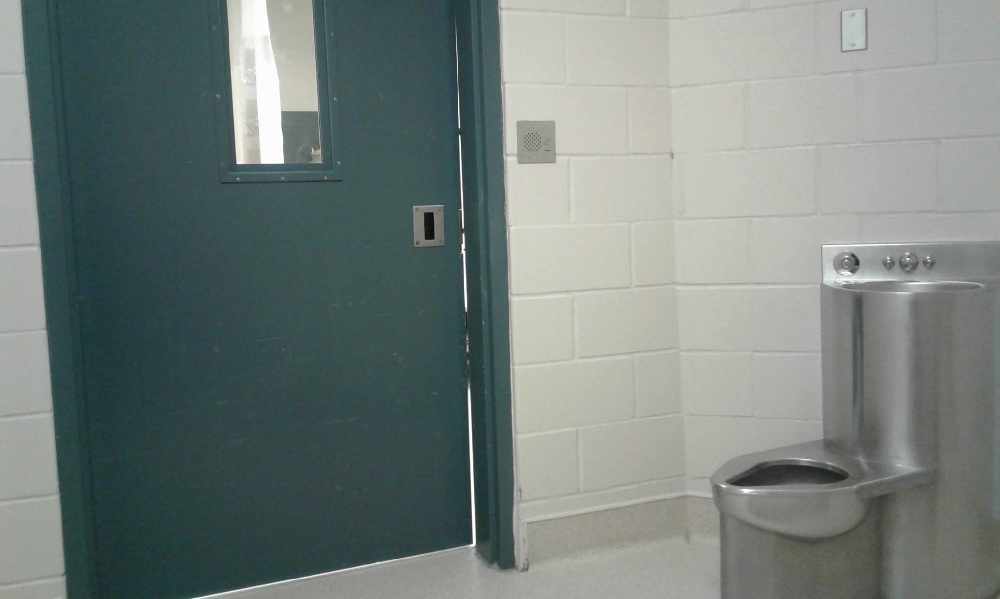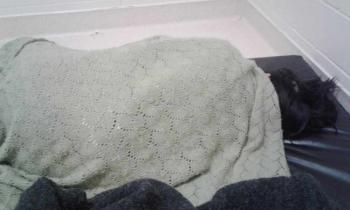By Andrea Smith
Windspeaker.com Contributor
An angry mother is on a mission after she says her daughter was mistreated while under hospital care.
Teresa Walker’s daughter, Brook, was taken into emergency care at the Chilliwack General Hospital last Friday. While there, she was placed in a room akin to a jail cell, said Walker, and at one point stripped naked in front of workers—including male workers—then given a blanket and left without further assistance for hours.
“Well, I just called 911 like we normally do… because she has a seizure disorder, so this is nothing new. We always go to the hospital. We’ve been doing this since she was in Grade 3.”
Brook is now 20, but mom and daughter live together, and Walker frequently helps with Brook’s medical issues. In her mother’s words, at this time Brook was experiencing a mental health issue, bad enough that it warranted a hospital trip.
“She was really, really depressed a few days, and crying a lot. And Brook’s a big girl, so I can’t get her down the stairs. So I just called 911… In all the years I’ve been going to emergency, I’ve never had this kind of treatment,” said Walker.
According to Walker, the ambulance stopped at the Hope hospital before moving onto Chilliwack. She and her daughter are from Hope, so they knew the attending doctor there. Together, they decided the best course of action was to send Brook to Chilliwack so she could see the hospital psychiatrist there the next morning.
While in Hope, Brook was given pain killers for a tendon injury in her arm, which may have contributed to the situation going awry.
“What happened was she rolled in… She was really high, and she didn’t know where she was… They walked her into this cell which is right beside the emergency room. They stripped her, and put her on a bed on the floor, and threw a blanket on her, and left her there,” said Walker.

“I couldn’t believe they would have a jail cell in the emergency ward. Like maybe they do use that when police bring people in from the prison… Maybe that’s why... But when I rolled in, they stopped me flat at the door. The nurse was so indignant. She said, “why don’t you just go home?’”
The key issue, said Walker, is that her daughter was stripped naked—and her privacy, and her body, were violated, in front of cameras, said Walker. From there Brook was neglected, asserts Walker. including not being given hygiene materials to clean up blood from her “moon time”.
And Walker was not allowed to see her or talk to her, and was slept in a chair all night, waiting in angst for answers.
At one point, an older woman who happened to be waiting in the emergency room, as well, approached Walker and told her she was a retired nurse, and that she, too, felt something was very wrong with the situation.
This helped Walker reaffirm her own suspicions, and she has been trying to hold the hospital accountable since.
“I had a meeting with them yesterday. The head of the ER was there, a social worker, the psychiatrist, and a Native liaison… and me. They didn’t have much to say. The only thing they said was ‘It’s protocol.’ That was it, there was really no explanation,” said Walker.
Brook was released just this past Wednesday from the psych ward of the hospital. She had been moved there Friday, Feb. 9 around 3 p.m. She was in the room while her mother shared their story with Windspeaker.com, and she confirmed the details of what they say happened.
Walker also went public with a Facebook post. She’s received multiple messages from people who complained about the treatment at the Chilliwack hospital. All of them First Nations.
Walker believes racial discrimination is at play. She is planning to file a complaint with the First Nations Health Authority.
“They want to talk with me, now. But I’m not going to talk with them because I’m going to see my lawyer,” said Walker. “We’re just going to carry on and see what we can do. My biggest thing is I want changes made,” she added.
Dr. Anson Koo, the head of the Mental Health and Substance Abuse program with Fraser Health (at Chilliwack hospital) was reached for comment on the situation. While restrictions on client privacy prevented him from being able to share much about Walker and Brooks’ personal experience, Koo was able to share what criteria is used when someone is placed in the “seclusion room” as they call it, and what happens while someone is in there.
“What I would say is there are a number of treatment options for patients attending the hospital, and depending on how sick they are, and what we call, ‘How acute they are’ in terms of how much of a risk they seem, like they might pose to themselves or others… This can include use of the seclusion room,” said Koo.
According to Koo, when someone is admitted to the hospital for a mental health situation, they are assessed—at length, by highly trained staff—and if there is concern for safety, they’re put in the seclusion room.
Koo made it clear that he was not speaking directly about Brook’s case, but speaking about the situation that would, normally, have someone be placed in that room.
Further, he says while in there, a patient will be given pyjamas to change into, and they will be offered hygiene products, and a shower. It is mandatory for all patients being admitted—whether in the seclusion room or not—to change into hospital clothes. In the event that they are unable to change themselves, then hospital staff will change a patient. And cameras are used in the seclusion room to monitor patients for safety, he said.
“There will be a meeting next week, and our patient’s mother may actually be satisfied with our explanation of what occurred… if she isn’t then there are multiple avenues to pursue an investigation… We do have a formal process for filing a complaint,” he said.

